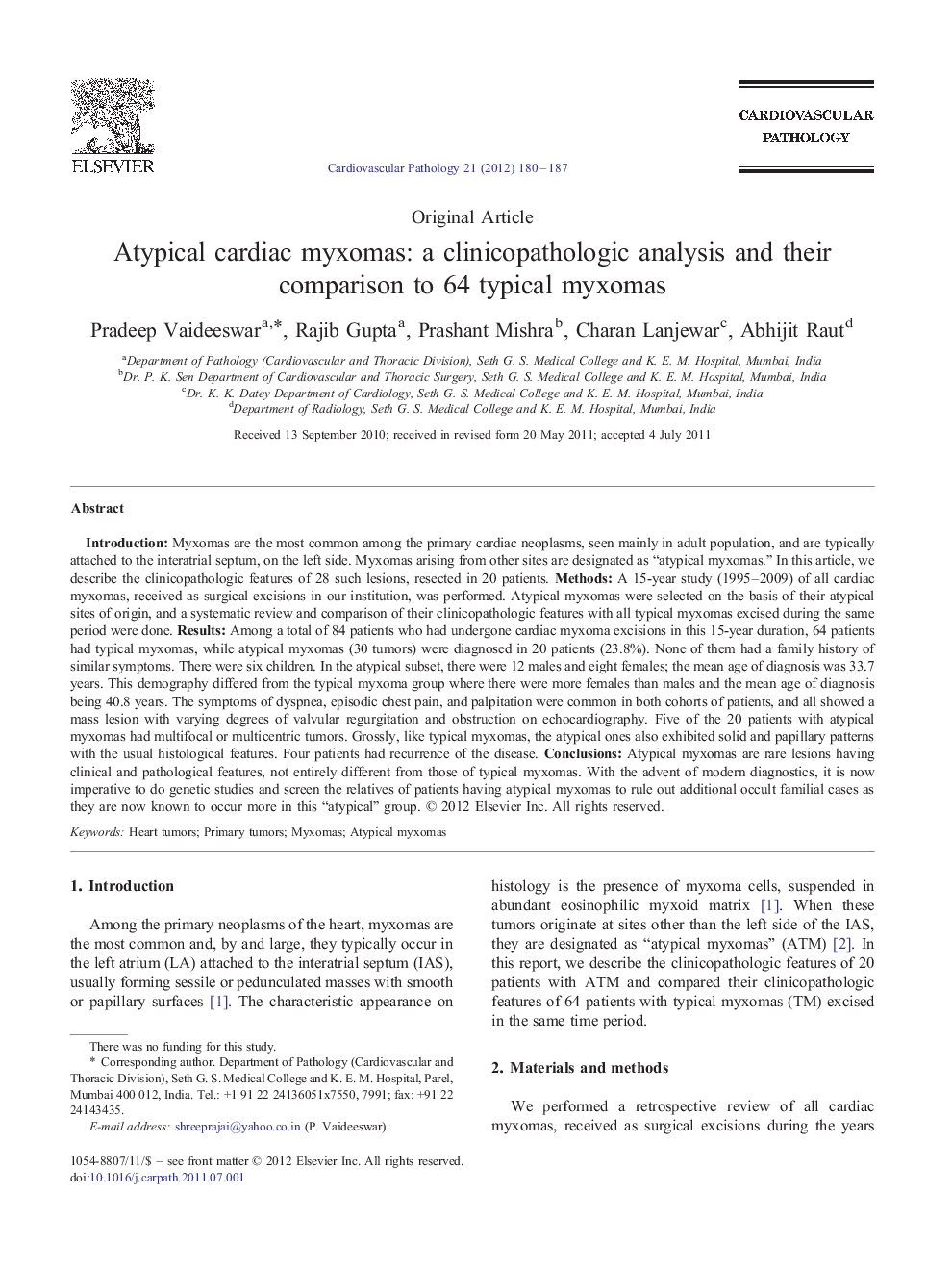| Article ID | Journal | Published Year | Pages | File Type |
|---|---|---|---|---|
| 2898753 | Cardiovascular Pathology | 2012 | 8 Pages |
IntroductionMyxomas are the most common among the primary cardiac neoplasms, seen mainly in adult population, and are typically attached to the interatrial septum, on the left side. Myxomas arising from other sites are designated as “atypical myxomas.” In this article, we describe the clinicopathologic features of 28 such lesions, resected in 20 patients.MethodsA 15-year study (1995–2009) of all cardiac myxomas, received as surgical excisions in our institution, was performed. Atypical myxomas were selected on the basis of their atypical sites of origin, and a systematic review and comparison of their clinicopathologic features with all typical myxomas excised during the same period were done.ResultsAmong a total of 84 patients who had undergone cardiac myxoma excisions in this 15-year duration, 64 patients had typical myxomas, while atypical myxomas (30 tumors) were diagnosed in 20 patients (23.8%). None of them had a family history of similar symptoms. There were six children. In the atypical subset, there were 12 males and eight females; the mean age of diagnosis was 33.7 years. This demography differed from the typical myxoma group where there were more females than males and the mean age of diagnosis being 40.8 years. The symptoms of dyspnea, episodic chest pain, and palpitation were common in both cohorts of patients, and all showed a mass lesion with varying degrees of valvular regurgitation and obstruction on echocardiography. Five of the 20 patients with atypical myxomas had multifocal or multicentric tumors. Grossly, like typical myxomas, the atypical ones also exhibited solid and papillary patterns with the usual histological features. Four patients had recurrence of the disease.ConclusionsAtypical myxomas are rare lesions having clinical and pathological features, not entirely different from those of typical myxomas. With the advent of modern diagnostics, it is now imperative to do genetic studies and screen the relatives of patients having atypical myxomas to rule out additional occult familial cases as they are now known to occur more in this “atypical” group.
